Click on images to enlarge
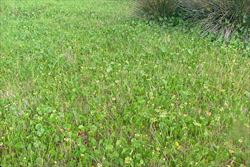
infestation (Photo: Sheldon Navie)
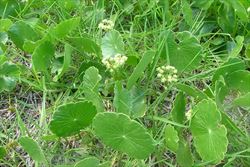
habit (Photo: Sheldon Navie)

habit (Photo: Sheldon Navie)

glossy green leaves (Photo: Sheldon Navie)
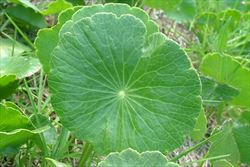
close-up of rounded leaf (Photo: Sheldon Navie)
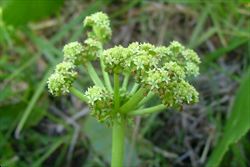
flower cluster (Photo: Sheldon Navie)
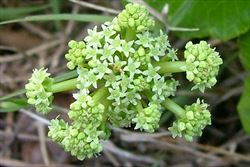
close-up of flowers (Photo: Sheldon Navie)
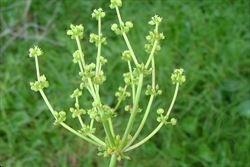
immature fruit (Photo: Sheldon Navie)
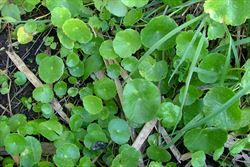
the native shield pennywort (Hydrocotyle verticillata) growing in a marshy area (Photo: Sheldon Navie)
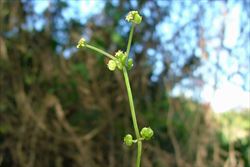
the less complex flower clusters of shield pennywort, Hydrocotyle verticillata (Photo: Sheldon Navie)
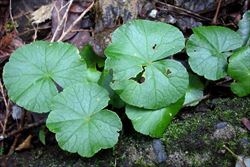
large pennywort (Hydrocotyle pedicellosa), with leaf stalks joined to the base of the leaf blades (Photo: Sheldon Navie)
Scientific Name
Hydrocotyle bonariensis Lam.
Synonyms
Hydrocotyle umbellata L.
Family
Apiaceae (New South Wales, the ACT, Victoria, Tasmania, Western Australia and the Northern Territory)Araliaceae (Queensland)Umbelliferae (South Australia)
Common Names
American pennywort, beach pennywort, Californian pennywort, coast pennywort, coastal plain pennywort, Kurnell curse, Kurnell's curse, largeleaf marshpennywort, largeleaf pennywort, large-leaved pennywort, penny wort, pennywort
Origin
Native to south-eastern USA, Mexico, Central America (i.e. Guatemala, Nicaragua, Costa Rica and Panama), the Caribbean (i.e. Cuba and Puerto Rico), South America (i.e. western Venezuela, Brazil, Bolivia, Colombia, Peru, Argentina, Chile, Paraguay and Uruguay), sub-Saharan Africa (i.e. Cameroon, the Ivory Coast, Ghana, Liberia, Nigeria, Senegal, Angola, Mozambique, South Africa), Madagascar and the Mascarenes (i.e. Mauritius and La Reunion).
Naturalised Distribution
Widely naturalised in the coastal districts of southern and eastern Australia (i.e. in south-eastern Queensland, the coastal districts of New South Wales, in south-eastern and southern Victoria, in south-eastern South Australia and in south-western Western Australia). Also naturalised on Lord Howe Island.
Notes
Coast pennywort (Hydrocotyle bonariensis) is regarded as an environmental weed in New South Wales and is a minor or potential environmental weed in other parts of southern Australia. This species prefers sandy or skeletal soils and is now widely naturalised in brackish and sandy coastal areas in south-eastern Australia. Its creeping stems, which root at the joints (i.e. nodes), allow it to quickly colonise areas and suppress the growth of other plants. Coast pennywort (Hydrocotyle bonariensis) invades areas ranging from coastal sand dunes, to cliff faces, coastal riparian habitats, brackish wetlands and open woodlands.
Coast pennywort (Hydrocotyle bonariensis) is now present along the entire New South Wales coast and is one of the most significant weeds of coastal environs in the Sydney area. It is a common secondary coloniser of coastal sand dunes in New South Wales, and is especially common near river and lagoon outlets. This species appears on several local and regional environmental weed lists (i.e. in Warringah, Randwick and Manly shires, and in the South Coast, Central Coast and Sydney North regions) and has also been recorded in conservation areas (e.g. in North Narrabeen Headland Reserve and smothering native seedlings in revegetation areas at Gordon's Bay) in this state.
It is also listed as a major weed of coastal saltmarsh and swamp oak floodplain forests, which are both endangered ecological communities in New South Wales. In Western Australia, it is found in fresh water seeps on or near beaches in the Bunbury area and along drains in Perth.

